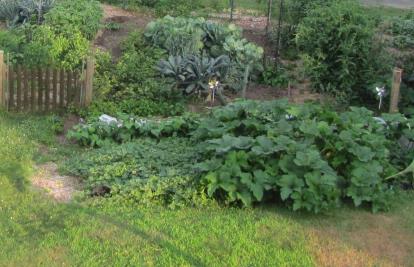By the time this article makes it into the pages of The Advocate temperatures will once again have returned to the new normal for January – that is to say not quite cold. At the time of writing though, it is just a bit chilly out . Each morning the chickens greet me with raised middle claws. Now that their water is on a heated pedestal at least they have frost free water to drink. They’d probably enjoy hot buttered rum, but I think egg production might fall off.
So, as I was writing, the overnight temperatures have been a bit more winter like. At night we’ve even see some good solid single digit negatives. I noted to one of the boarders that “I like a low temperature in the morning, it smells like bug death.” As is often the case he looked at me as if I were speaking in some sort of crude dialect. In this particular case he humored me by asking why cold was bad for garden pests. “The insect pests that tend to eat my garden plants….” I began. “Pop, pop, pop, do you know how to spawn a captive squid in minecraft?” Sigh.
So you get to hear about it. Last summer I had several pests in the garden: a fat squirrel, an oomycete on the tomatoes and potatoes, some bean bugs, flea beetles, cabbage worms, a vine borer in the zucchini, and of course the chickens that ate my peas. But the insect that really frosted me last summer was the squash bug. I tried to grow pumpkins for the first time (see picture). As soon as the fruits formed, the plants began dying. The squash bugs even destroyed the fruits.
Squash bugs are heteroptera, true bugs. They have shield shaped backs and six legs. Their body consists of the typical three body parts,(for insects): head, thorax and abdomen, but there isn’t a distinct waist between thorax and abdomen as there is in the wasps and ants (the hymenoptera). They look a lot like stink bugs, and when you crush them (Oh how I love to crush them) they stink. But they aren’t “true” stink bugs. Stink bugs, incidentally, do not enjoy squash, or being squashed.

In any case I got to thinking about how squash bugs make it through the winter. Different insects have different strategies. Unlike some garden pests, squash bugs only have one generation per summer. They overwinter as “unmated” adults I believe that’s how entomologists say “virgin.” In the spring they mate, lay eggs and eventually die (not the entomologists). The eggs hatch as vile little “nymphs.” There are five nymph stages before the adults start looking around for a place to spend the winter. Apparently they hide under rocks, logs and garden debris and wait out the cold weather. When spring weather hits, they head straight for the nearest squash patch and begin to lay it to waste. It makes me want to go outside and start lifting rocks randomly. Squashing squash bugs seems like a great way to spend a winter afternoon.


